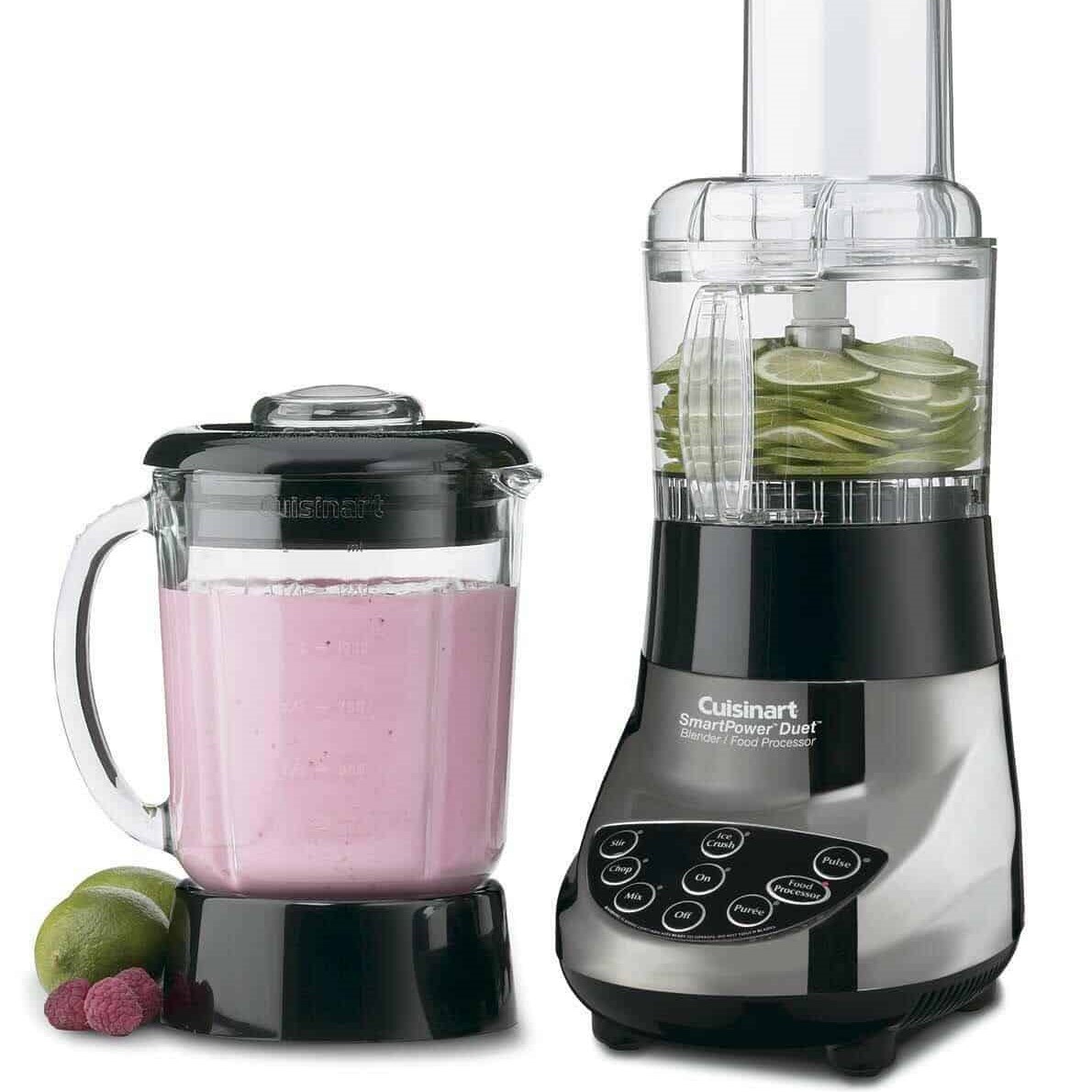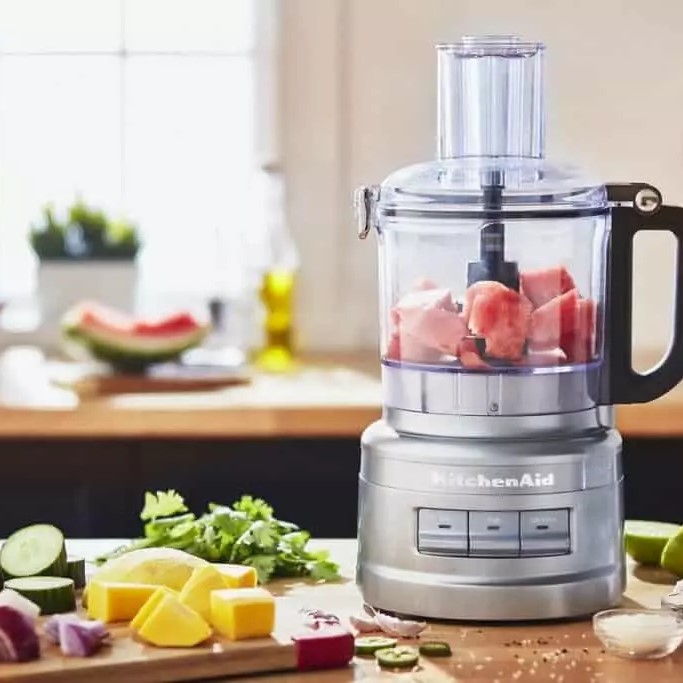
Introduction
Finding the right kitchen appliance can often feel overwhelming. With the array of options available, it’s easy to be unsure about what will best suit your culinary needs. This is especially true when deciding between a blender and a food processor. Both are incredibly useful tools with specific functions that can help streamline cooking processes and inspire new recipes. However, it’s crucial to understand the tasks each one excels at to make an informed decision. Whether you’re looking to create velvety soups, refreshing smoothies, or finely chopped vegetables for a stir-fry, grasping the essential differences between these appliances will guide you to the right choice. In this blog, we’ll delve into when it’s best to use a blender instead of a food processor, and vice versa, examining their design differences, functionalities, and the unique advantages each brings to your kitchen. Let’s begin by exploring the fundamental characteristics that set blenders and food processors apart.
Essential Differences Between Blenders and Food Processors
Design and Functionality
Blenders typically feature a tall, narrow container with a tight-fitting lid and a blade at the bottom. This design creates a powerful vortex that pulls ingredients downwards, ideal for producing smooth liquids like soups and smoothies. Food processors, however, have a broader, shorter bowl which helps with less liquid-heavy tasks. Their interchangeable blades and disks make them suitable for a variety of cutting, dicing, and even dough-making tasks.
Tasks Better Suited for Each Appliance
Using a blender instead of a food processor is ideal for creating creamy textures and liquid recipes. Blenders excel in emulsifying, pureeing, and blending tasks—perfect for smoothies, liquid doughs, or soups. Food processors are the choice for less fluid tasks: chopping vegetables, grinding nuts, and preparing thicker mixtures like doughs or coarser pestos. They handle tasks requiring more texture with ease due to their diverse blade options.
When to Use a Blender
Blenders shine when dealing with liquids and achieving smooth consistencies. Ideal for drinks, purees, and soups, they use a strong vortex to blend ingredients to perfection. Here’s when reaching for your blender is the best choice:
Creating Smooth Liquid Mixtures
A blender excels at creating seamless liquid mixes such as smoothies, shakes, and batter for pancakes. These appliances effortlessly combine ingredients, ensuring a uniform texture.
Crushing Ice and Frozen Ingredients
Blenders are your go-to for frozen concoctions. They can crush ice, frozen fruit, and other hard items quickly, making them perfect for preparing icy drinks or desserts.
Blending Hot Liquids and Soups
With a blender, hot ingredients blend safely, resulting in smooth, hot soups or sauces. Their unique design allows steam to escape, preventing pressure buildup and ensuring a safe blending process.
When to Opt for a Food Processor
Food processors excel in tasks where less or no liquid is involved.
Handling Drier Mixtures with Texture
Food processors are ideal for tasks that require precise texture without much liquid. Chop vegetables for salads, grind nuts, or mix dry ingredients for baking with ease.
Slicing, Dicing, and Shredding
These appliances come with various blades that make slicing cheeses, dicing vegetables, and shredding cabbage or other items quick and straightforward.
Preparing Doughs and Heavy Mixes
Food processors can handle tough doughs and thick mixes like cookie or bread dough efficiently, thanks to their sturdy blades and powerful motors.
Advantages of Blenders
Blenders offer several benefits that make them an essential kitchen appliance for liquid preparations and more. Here are some of the key advantages:
Quick Liquid Preparations
Blenders excel in creating smooth, uniform liquid mixtures swiftly. They are ideal for making smoothies, shakes, and soups.
Heating Capabilities
A high-quality blender like the Vitamix can heat ingredients through friction. This allows you to make hot soups directly in the blender within minutes.
Simple Clean-Up
Blenders are generally easier to clean compared to food processors. Many models have self-cleaning programs, and others simply require a quick blend with some dish soap and water.
Advantages of Food Processors
Food processors are versatile tools in any kitchen, offering unique benefits over blenders for certain tasks. Here are their primary advantages:
Versatile Blade Attachments
Food processors come with a variety of blades and discs. These allow for a wide range of tasks, such as slicing vegetables, grating cheese, and kneading dough.
Better for Large Volume and Thick Mixes
Due to their wider base, food processors handle large quantities and thick mixes with ease. This is perfect for making doughs, chunky salsas, and grinding meats.
Precise Cutting and Shredding
The precision of a food processor’s blades makes it ideal for fine chopping, dicing, and shredding. This results in consistently sized pieces, which can be important for recipes that require uniformity.
Food processors are a boon for those who cook often and in large batches. Their strong motors and sturdy construction make them reliable for tough jobs. Whether it’s preparing a meal for a crowd or getting consistent results, food processors save time and effort. They are particularly useful when you need to chop lots of vegetables or when you’re making pastry and need cold ingredients to stay cold. With a food processor, you can create textures that are hard to achieve with a blender. If your cooking style involves more food prep than liquid blends, investing in a food processor might be the smarter choice.
FAQs on Choosing Between Blender and Food Processor
Choosing between a blender and a food processor can seem confusing. Here are some frequently asked questions to help you decide.
What to Consider Before Deciding
Before choosing between a blender and a food processor, consider what you’ll mostly use it for. If you’ll blend mostly liquids, go for a blender. For drier textures, choose a food processor.
Think about the volume of food you’ll handle. A food processor is better for larger, thicker mixes, while blenders are suited for smaller, liquid tasks.
How to Maximize Use Depending on Needs
To get the most out of your blender, use it for smoothies, soups, or sauces. It can quickly liquefy ingredients and even heat them up.
A food processor is versatile with its multiple attachments. Use it for slicing, grating, or kneading. It can handle tough textures and larger quantities more effectively.
Both appliances can enhance your kitchen capabilities. Match your cooking style to the strengths of each to make the best choice.
Recipes Utilising a Blender Instead of a Food Processor
Creamy Avocado Dressing
Ingredients:
- 1 ripe avocado
- 1 cup plain yogurt
- 2 tablespoons lemon juice
- 1 clove garlic
- Salt and pepper to taste
Instructions:
- Combine all ingredients in the blender.
- Blend until smooth and creamy.
- Adjust seasoning as desired.
Smoothie Bowl
Ingredients:
- 1 banana
- 1/2 cup spinach
- 1/2 cup almond milk
- 1 tablespoon almond butter
Instructions:
- Add all ingredients into the blender.
- Blend until smooth and pour into a bowl.
- Top with your favorite fruits, nuts, and seeds.
Spicy Tomato Salsa
Ingredients:
- 1 can of diced tomatoes
- 1/2 onion
- 1 jalapeno (seeded for less heat)
- Fresh cilantro
- 1 lime (juiced)
Instructions:
- Add all ingredients into the blender.
- Pulse until you achieve your desired consistency.
- Serve with tortilla chips.
 Conclusion
Conclusion
Deciding between a blender and a food processor depends on your specific needs. If your cooking often involves liquids or you enjoy making smoothies and soups, a blender is the better choice due to its design for smooth liquid preparations. On the other hand, if you frequently need to chop, slice, or manage doughs, a food processor with its versatile blade attachments is ideal. By considering what you will use the appliance for most, you can make an informed decision that enhances your cooking experience and fits your lifestyle. Remember, each appliance has its unique advantages that can aid in specific kitchen tasks, so choosing the right one can significantly improve your culinary adventures.







